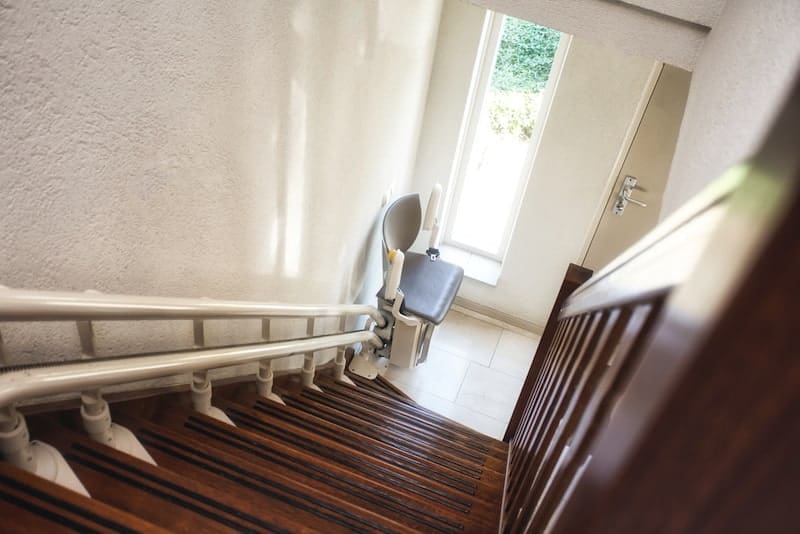In today’s world, creating a fully accessible home is more than just a trend—it’s a necessity. Whether you are accommodating aging family members, individuals with disabilities, or simply planning for the future, ensuring that your home is accessible can enhance the quality of life for all its residents. An accessible home promotes independence, safety, and comfort, making daily tasks easier and more enjoyable. In this article, we will explore seven key components that are essential for a fully accessible home.
Enhancing Home Accessibility
Creating a fully accessible home involves integrating features that cater to the mobility needs of all residents. One essential component for enhancing accessibility is the installation of a wheelchair lift. Having a wheelchair lift is crucial for homes with multiple levels, providing safe and easy access between floors for individuals using wheelchairs. These lifts can be installed indoors or outdoors, ensuring seamless movement without the need for extensive renovations. By incorporating a wheelchair lift, homeowners can significantly improve the independence and quality of life for those with mobility impairments. Additionally, modern wheelchair lifts are designed to be sleek and unobtrusive, blending seamlessly with the home’s decor while providing a practical solution for navigating stairs and elevated entrances.
Welcoming All
The first step in creating an accessible home is to ensure that the entrance and doorways are easy to navigate. This includes having a no-step entry or a gently sloping ramp that allows wheelchair users and those with mobility issues to enter the home with ease. Doorways should be wide enough to accommodate wheelchairs and walkers, typically at least 32 inches wide. Installing lever-style handles instead of traditional doorknobs can make opening doors easier for individuals with limited hand strength or dexterity.
Clear and Navigable
Inside the home, hallways and pathways should be clear and spacious to allow for easy movement. This means minimizing clutter and ensuring that hallways are wide enough to accommodate wheelchairs and other mobility devices. Ideally, hallways should be at least 36 inches wide. Flooring should be smooth and non-slip, avoiding thick carpets or rugs that could become tripping hazards. Adequate lighting is also crucial to ensure that pathways are visible and safe to navigate.
Safety and Convenience
The bathroom is one of the most critical areas to focus on when designing an accessible home. Key features include a roll-in shower with a hand-held showerhead, a shower bench, and grab bars strategically placed around the shower and toilet areas. The toilet should be at a comfortable height for transfer from a wheelchair, and sinks should be mounted at a height that allows wheelchair users to roll under them. Non-slip flooring and adequate lighting further enhance safety and convenience.
Functionality for All
An accessible kitchen is designed to be functional for everyone, regardless of their physical abilities. This includes adjustable-height countertops and sinks, pull-out shelves and drawers, and appliances that are easy to reach and operate. Lever-style faucets and touch-control devices can make it easier for individuals with limited hand strength to use the kitchen. Ensuring that the kitchen layout provides ample space for maneuvering wheelchairs and other mobility devices is also crucial.
Comfort and Ease
Creating an accessible bedroom involves more than just ensuring space for movement. Bed height should allow for easy transfer from a wheelchair, and there should be enough space on at least one side of the bed for wheelchair access. Closets should have adjustable rods and shelves that can be easily reached from a seated position. Additionally, installing lever-style door handles and light switches at accessible heights can make the bedroom more user-friendly.
Enhancing Independence
Technology plays a significant role in creating a fully accessible home. Home automation systems can enhance independence by allowing individuals to control lighting, temperature, security, and entertainment systems with voice commands or smartphone apps. Smart doorbells, automated blinds, and voice-activated assistants like Amazon Alexa or Google Home can make daily tasks more manageable for those with mobility or dexterity issues. Integrating these technologies into the home design can greatly improve accessibility and convenience.
Inclusive and Enjoyable
Accessibility should extend to outdoor spaces as well. Patios, decks, and gardens should be designed with level surfaces, wide pathways, and ramps where necessary. Raised garden beds can allow individuals in wheelchairs to enjoy gardening activities. Outdoor furniture should be sturdy and stable, providing comfortable seating that is easy to get in and out of. Ensuring that outdoor lighting is adequate will also enhance the safety and enjoyment of these spaces during the evening.

Creating a fully accessible home is about more than just meeting the minimum standards—it’s about designing a space where everyone can live comfortably and independently. By focusing on key components such as accessible entrances, hallways, bathrooms, kitchens, bedrooms, home automation, and outdoor spaces, you can create a home that is welcoming and functional for all residents. Investing in accessibility not only improves the quality of life for individuals with disabilities but also ensures that your home is prepared for any future needs. With thoughtful design and planning, a fully accessible home can provide a safe, comfortable, and inclusive environment for everyone.


